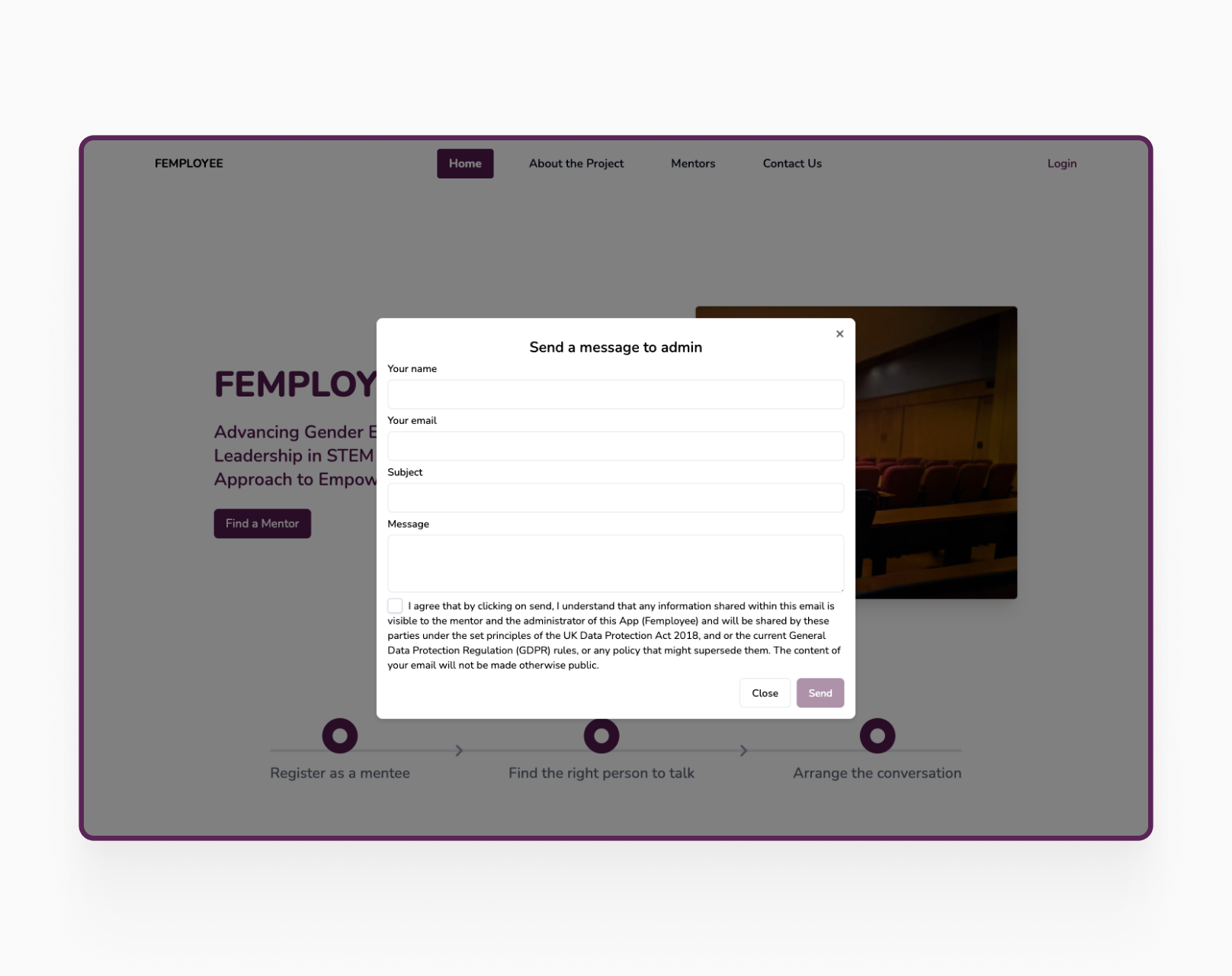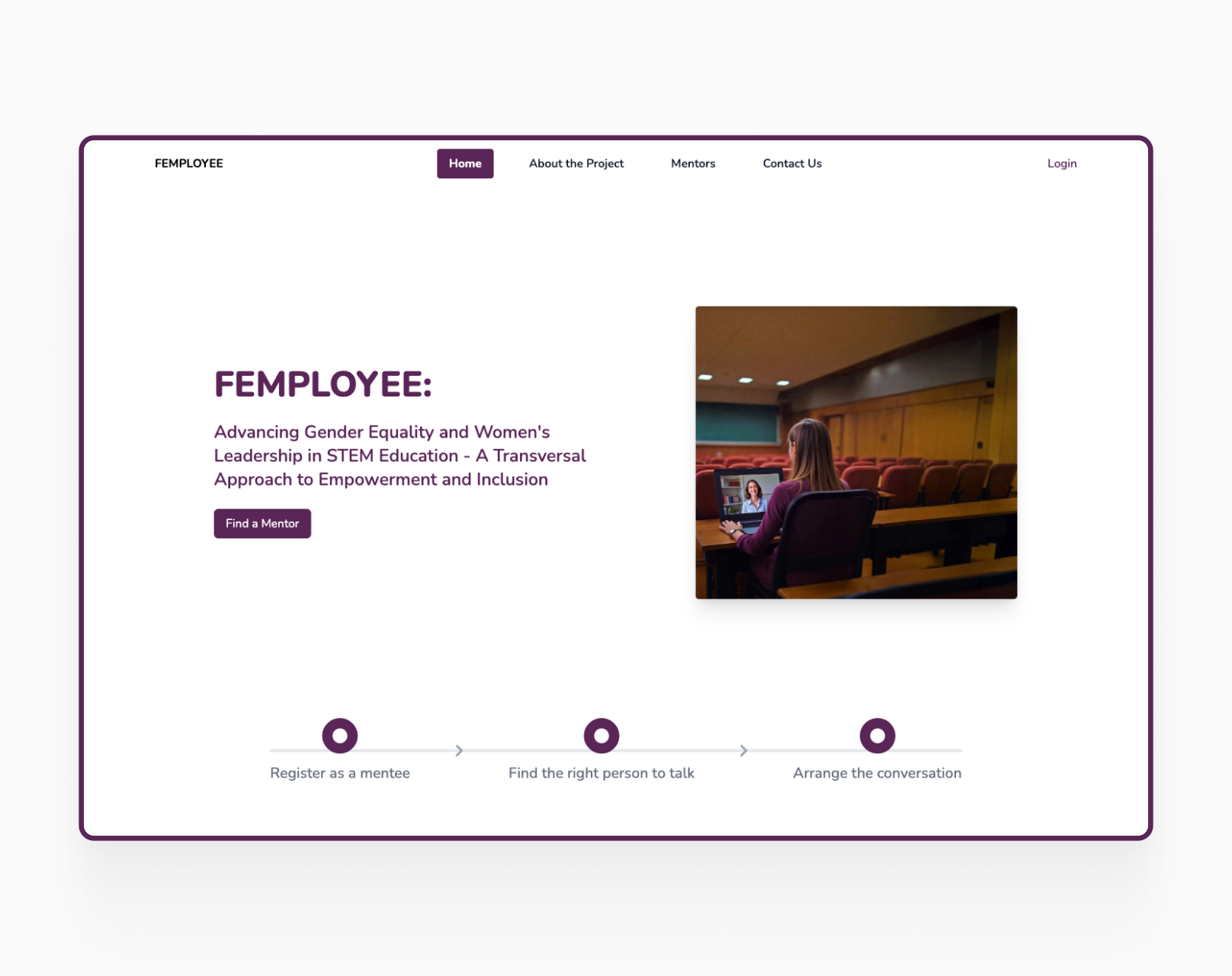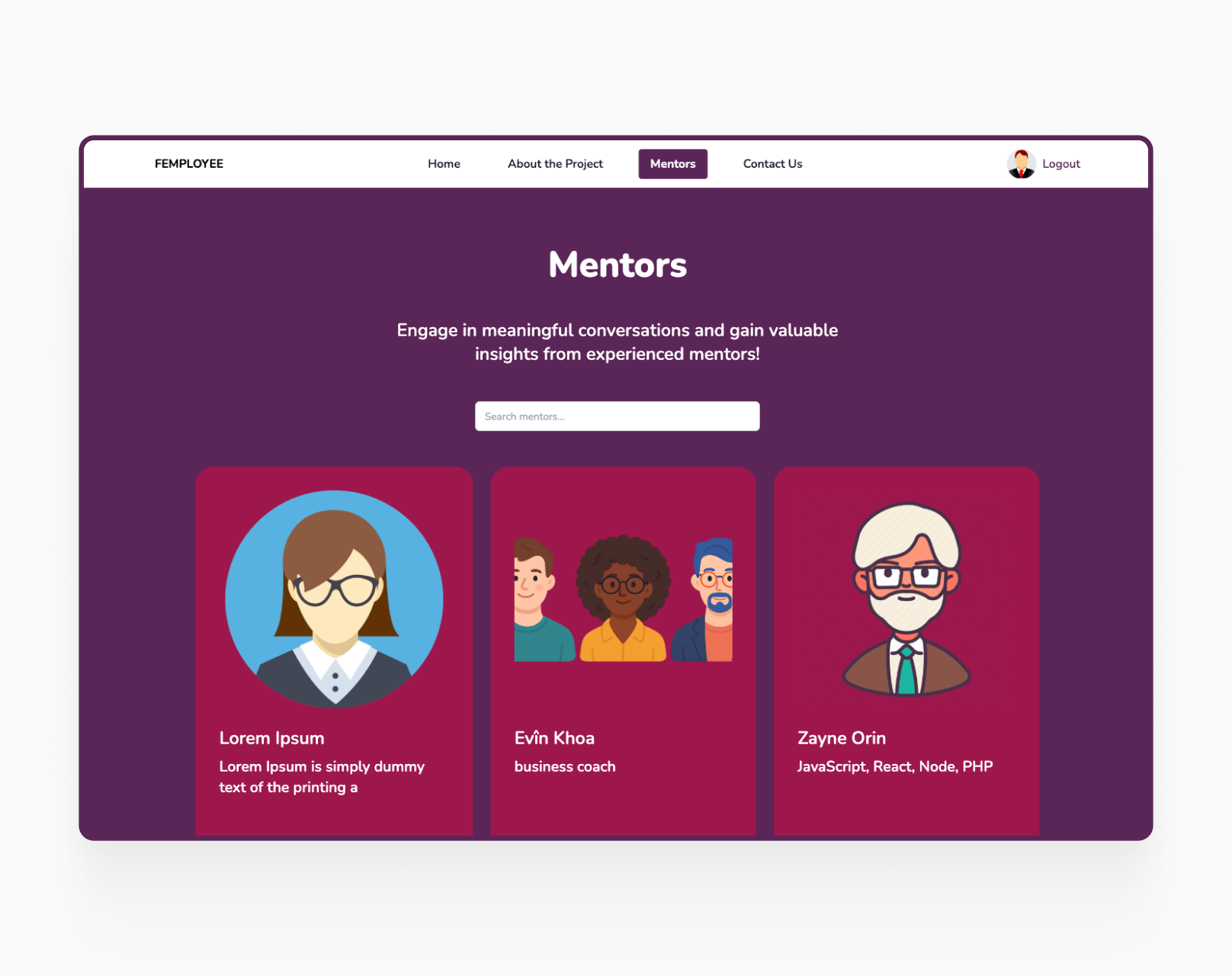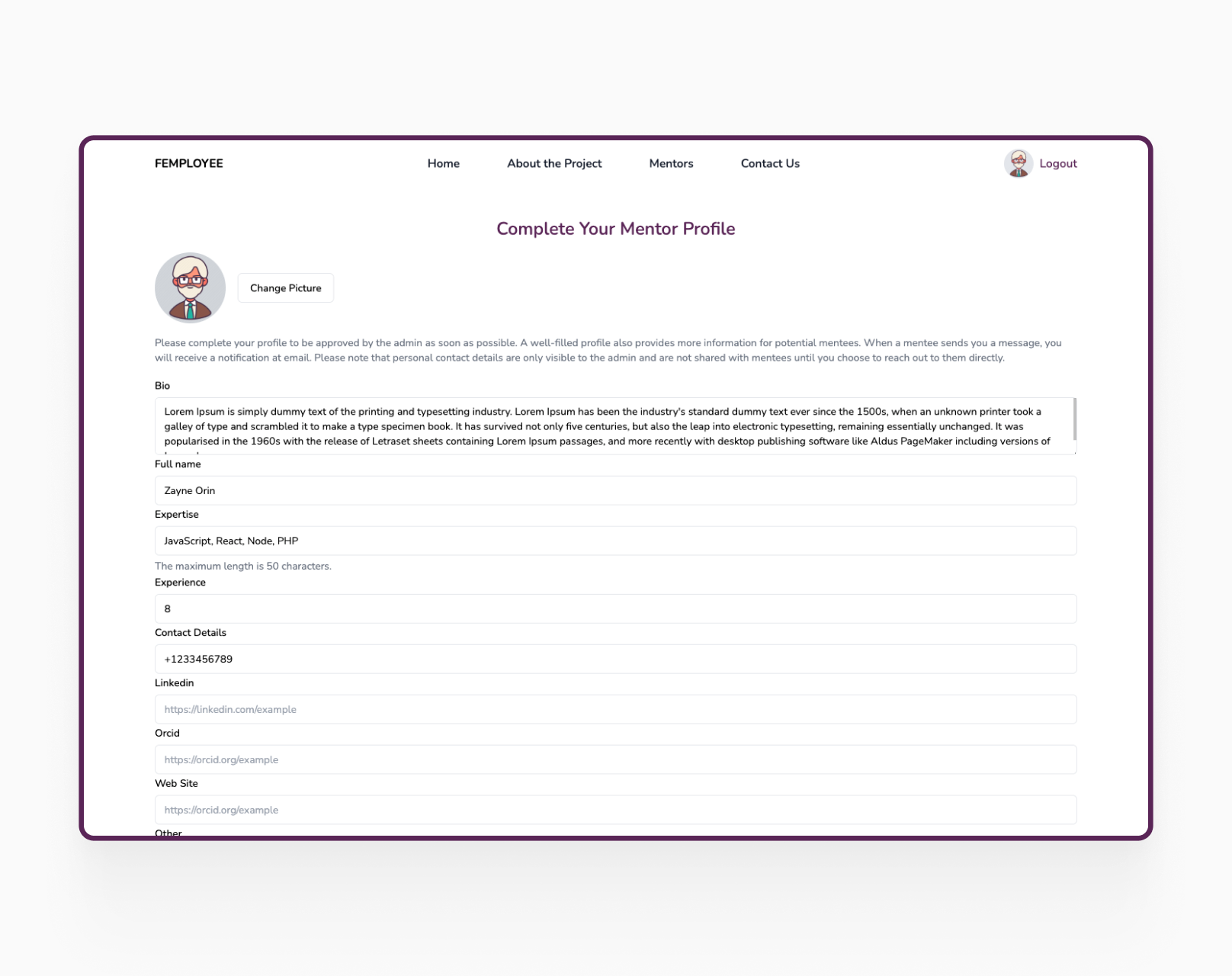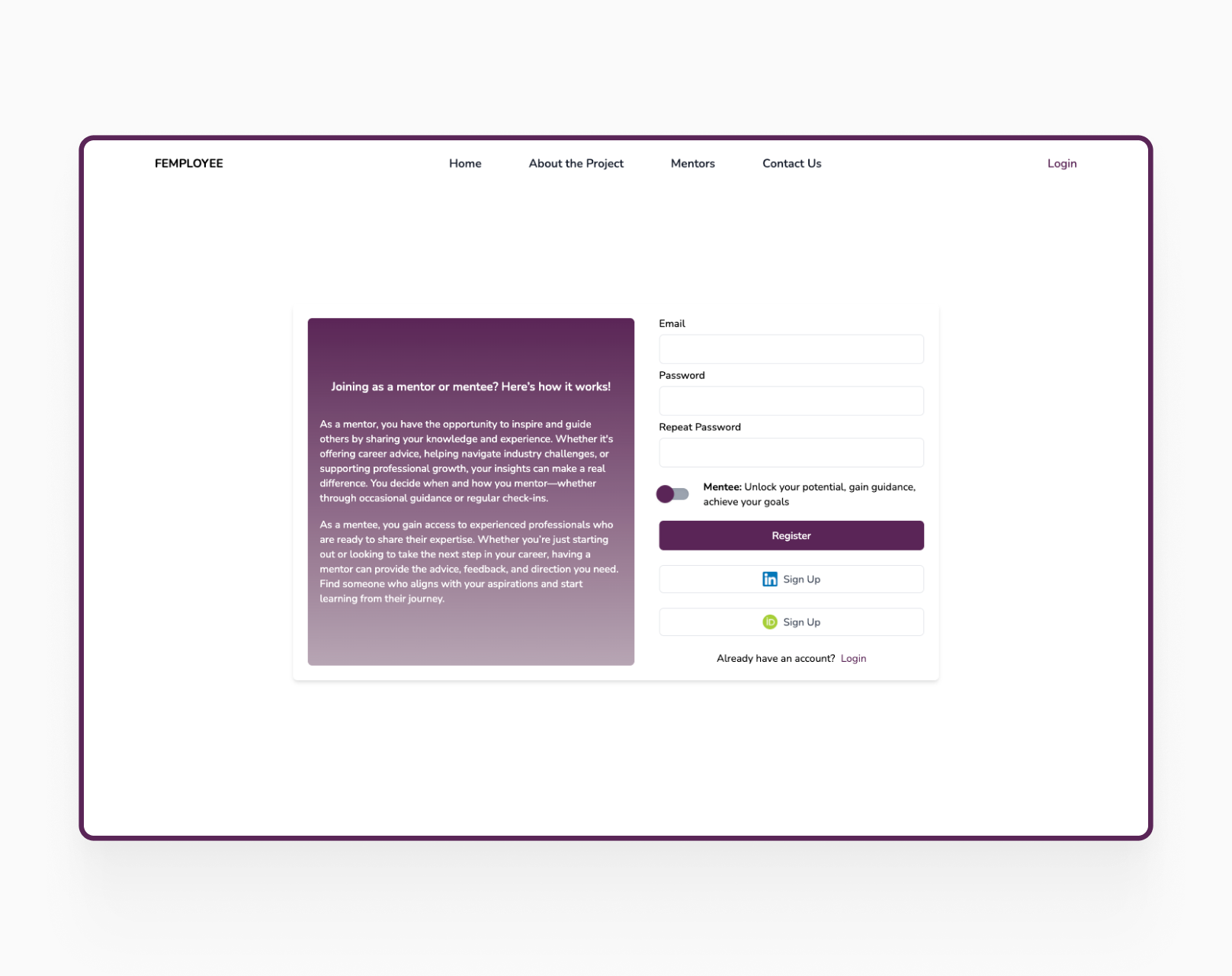FEMPLOYEE: A Mentorship Platform Supporting Young Women in Tech and Science
Ukraine, United Kingdom
Education
5 months
2 Full Stack Engineers, 1 .NET Engineer
Dedicated Development Team
React, Node.js
-
40K
Active Users
-
37
Countries
-
4M
Monthly Recipe Views
About Client
Our client is Kremenchuk Mykhailo Ostrohradskyi National University (KrNU) in Ukraine, working in partnership with the British University of Leicester. KrNU actively engages in international academic collaborations and socially impactful projects. Motivated by the growing need to support gender equality in STEM, the partner Universities came up with the idea of a platform for young women in science.
The initiative was born from a shared concern about the underrepresentation of women in engineering, women in tech, and science. Through cross-border collaboration and the British Council funding support, the team set out to build FEMPLOYEE, a digital solution that connects aspiring female students with experienced mentors across STEM fields.
The project helps young women access guidance and inspiration from experienced female role models in STEM.
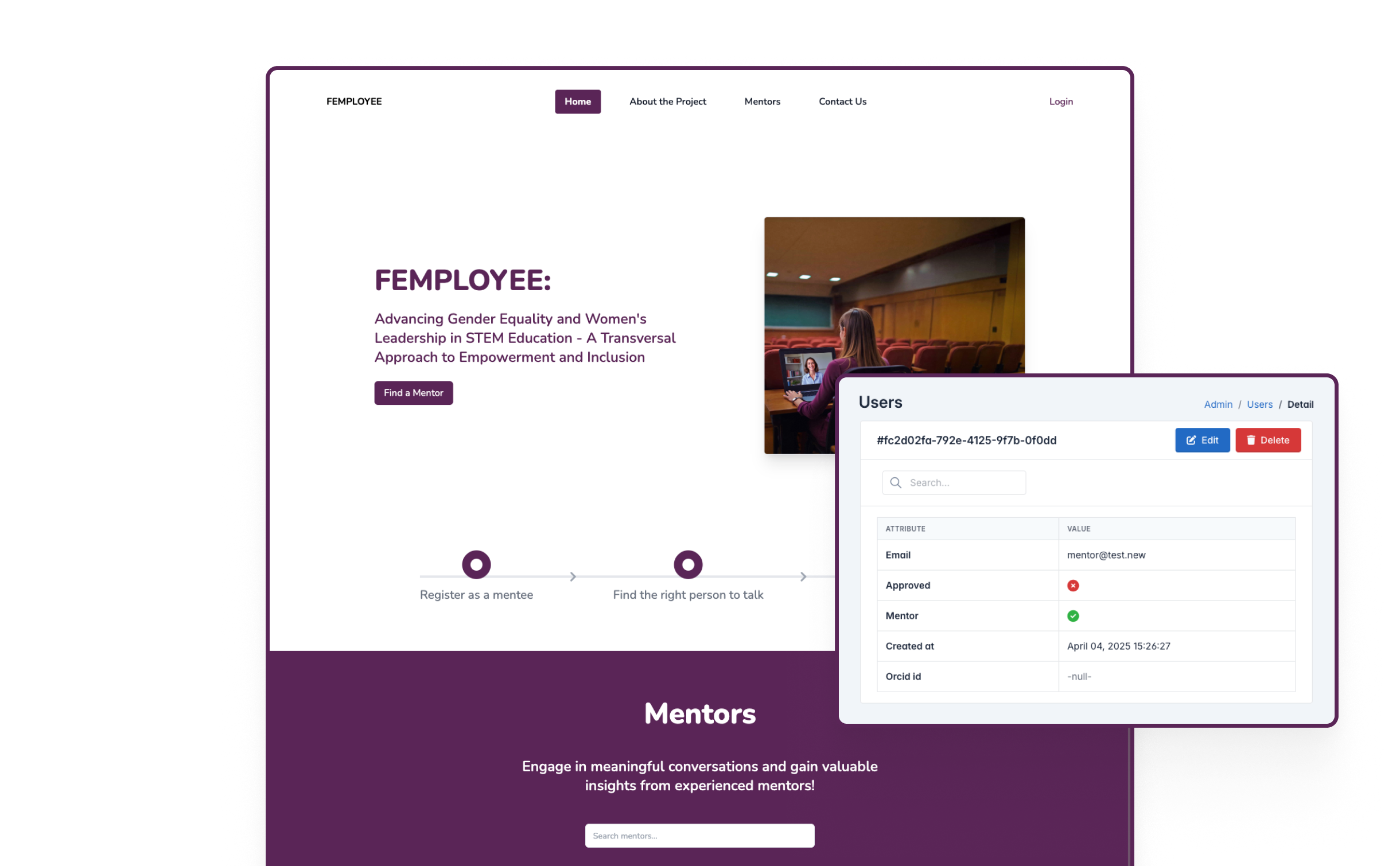
The Challenge
Research shows that in early and middle school, girls perform as well as boys in STEM subjects. Instead, by the time they reach high school and university, gender stereotypes often push them toward the humanities and away from science and engineering.
The key challenge in this project was to create a credible space where young women could feel encouraged to build academic and professional careers.
A few more challenges are the following:
- Designing a visually attractive platform that users enjoy exploring.
- Ensure mentors are verified professionals using ORCID for academic credibility and safety.
- Design admin tools for mentor approval and secure multi-channel authentication.
Goals

Effortless mentoring
Since all mentors in FEMPLOYEE are volunteers, we had to let them manage their availability on their own. The platform enables mentees to reach out first, and mentors then guide the communication and meetings in a way that suits them. That’s why there had to be no fixed time slots or strict booking rules.

Meaningful environment
It was important for us to build a space where young women felt safe reaching out and confident that mentors were trustworthy experts. That meant setting up a strong verification system and a clear academic focus.

Expand the mentor pool
Our post-launch goal was to expand the platform by involving mentors from IT-related fields. These communities are closely connected to STEM and are easier to reach through our existing networks. That could help to enhance the interest in the platform and its usability.
Dev Process
Development with respect to mentors’ time
Unlike paid platforms, everything here runs on goodwill, not fixed calendars or fees. As mentors are volunteers, one of our main technical priorities was creating a flow for mentors that allows them to manage their time on their own terms. We’ve chosen flexible coordination and avoided any complex scheduling tools or time-slot systems. In the FEMPLOEE platform, mentees initiate contact, and mentors take it from there.
ORCID integration
One of the most unique and technically the hardest aspects of the project was implementing ORCID login. Unlike popular services like LinkedIn, ORCID is rarely used for authentication, but it is the best for academic recognition.
Academic verification
To our regret, ORCID stores minimal user data, just name, email, and publication records. This made the verification tricky, as the API returns very limited info. We had to manually link ORCID profiles to existing user accounts and build a verification flow for mentors. As was mentioned before, the goal was to ensure mentors were real academics, not random users. It required custom admin tools and manual checks. It also required a lot of our thinking and effort.
Design Process
Lean Approach to Design
During the discovery phase, the team ran several workshops to map out user flows for both mentors and mentees. Instead of overinvesting in visuals too early, we prioritized clarity, usability, and comfort for each user role. The goal was to create a working flow before refining screens. This helped us validate functionality quickly and avoid building unnecessary features.
As our project manager says, the unicorns can always be added after the real work is done.
Product-Driven Design
Our engineers built prototypes by themselves, using React Material UI components and HTMX. Although we prioritized function over form, we strictly adhered to the British Council’s visual and accessibility guidelines across the platform.
Multi-Color System
The visual design of the FEMPLOYEE platform blends the identities of three key partners: the grantmaker British Council, Kremenchuk Mykhailo Ostrohradskyi National University, and the University of Leicester. This hybrid identity reflected the collaborative nature of the platform. While simple, the final palette was meaningful, being symbolic of the stakeholders behind the product.
-
100K
Conference Attendees
-
+25K
Video Lectures
-
150K
Contributing Authors
Outcome
One of the standout qualities of the FEMPLOYEE platform is its genuine care for the user experience. The team made a thoughtful choice to avoid automation and let the users feel freer while interacting with the platform. This approach earned trust and respect from early users and reflected the depth of discovery work done at the beginning of the project.
Currently, the platform has established a strong partnership with Kremenchuk Mykhailo Ostrohradskyi National University. This is a great foundation for expanding the mentoring community and validating the platform’s value in an academic environment.
One of the future goals is to grow partnerships with more universities across the country and in more specializations. Expanding the network geographically will help provide mentees with access to local mentors, which is especially important for those who prefer or require face-to-face support in their region. And for others, overcoming administrative and institutional barriers will be key to scaling the platform effectively, and will help students not to limit themselves with local support.
“Jellyfish’s real-time communication and ability to adapt to InsideOut’s existing team communication tools enabled us to coordinate teams across multiple projects and manage how we worked together most efficiently. Prioritization and delivery of support to the InsideOut’s internal teams within a tight deadline were critical elements of the InsideOut and Jellyfish partnership.”
Is this case in line with what you have planned to build?
Let’s schedule a quick call to explore how we can support your business objectives
